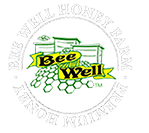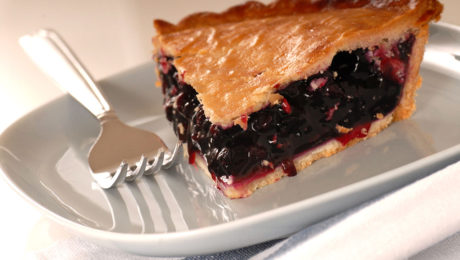Have you ever had honey in your pantry that is ‘crystallized’ and feels ‘gritty’? What you are feeling is the little granules starting to form when honey naturally granulates or hardens. It doesn’t mean it is going bad. In fact, that is nature’s way of preserving its finest sweetener.
Creamed honey is a type of honey that’s been processed in a special way. The reason you do this is to promote the formation of small sugar crystals and prevent large ones, and this ensures the honey will remain creamy and easy to spread. Creamed honey can be used as a sweetener in drinks and baking, but it’s also great as a spread on toast, crackers, and other treats.
Creamed Honey Recipe
- 16 ounces (454 g) Bee Well Honey
- 1½ ounces (45 g) Seed honey
- 1 teaspoon (2.6 g) cinnamon (optional)
- 1 teaspoon (5 g) herbs (optional)
- 1 teaspoon (5 ml) vanilla (optional)
Use honey that’s already been creamed. The process of making creamed honey involves adding seed honey to liquid honey. Seed honey has already crystallized, so it promotes more crystallization in fresh liquid honey. One of the seed types you can use is honey that’s already been creamed.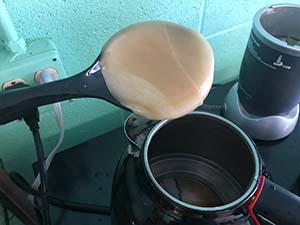
- Creamed honey can be purchased in many grocery stores, health food stores, at farmers markets, and at bee farms.
- Creamed honey will sometimes be labeled whipped, spun, or set honey.
Use crystallized honey powder. Another seed you can use to make creamed honey is the hardened sugar crystals from previously liquid honey. Unprocessed honey naturally crystallizes over time, and you can collect this hardened honey and powder it to use as seed honey.
- Collect the crystallized honey from an old jar of honey. Place the crystals in a blender or food processor and grind the crystals into a fine powder. This breaks down the large crystals, and these will seed the growth of more small crystals in your new batch of creamed honey.
- You can also grind the crystallized honey using a pestle and mortar
Make your own honey crystals. If you don’t have creamed honey or an old jar of crystallized liquid honey on hand, you can make your own crystals with a jar of new honey that hasn’t been pasteurized or filtered.
- Take the lid off the jar of honey. Place the jar in the fridge. Reduce the temperature of the fridge to 58 F (14 C) or lower.
- Over the next few days, the sugar in the honey will gradually crystallize. Collect the hardened crystals once you have enough for a seed to make your creamed honey.
- Process the crystallized honey in a blender, food processor, or with a pestle and mortar to turn it into a fine powder
Gather your ingredients. There are two main types of honey available on the market: raw unfiltered honey and pasteurized honey. The pasteurization process kills pollen, spores, and bacteria, and you can do this on your own by heating the honey before adding the seed. To make pasteurized creamed honey, you’ll need: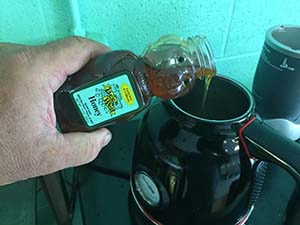
- Steam Kettle
- Your liquid honey and seed honey
- A medium saucepan with a lid
- A rubber spatula or wooden spoon
- A candy thermometer
- A sterilized storage jar with a lid
Heat the honey. Pour the liquid honey into the saucepan and heat it over medium-high heat. Use the candy thermometer to monitor the temperature, and bring the honey to 140 F (60 C).
- Along with killing bacteria, heating the honey will also remove any large crystals that have already formed. If large crystals form rather than small ones, the honey will harden instead of becoming smooth and spreadable.
- To make a larger batch of creamed honey, increase the ratios of liquid honey and seed honey. For the seed honey, use about 10 percent of the quantity of liquid honey.
Stir frequently. To prevent burning, stir the honey regularly as it heats. While it’s heating up, you can also add additional flavorings and ingredients to the honey if you like. You can gradually add in:
- Cinnamon
- Vanilla
- Dried herbs, such as thyme or oregano
Cool the honey and skim the bubbles. When the honey reaches 140 F (60 C), remove it from the heat. Set it aside and let it cool to about 95 F (35 C). As the honey cools, bubbles will rise to the surface. Skim the bubbles and the foam off the top.
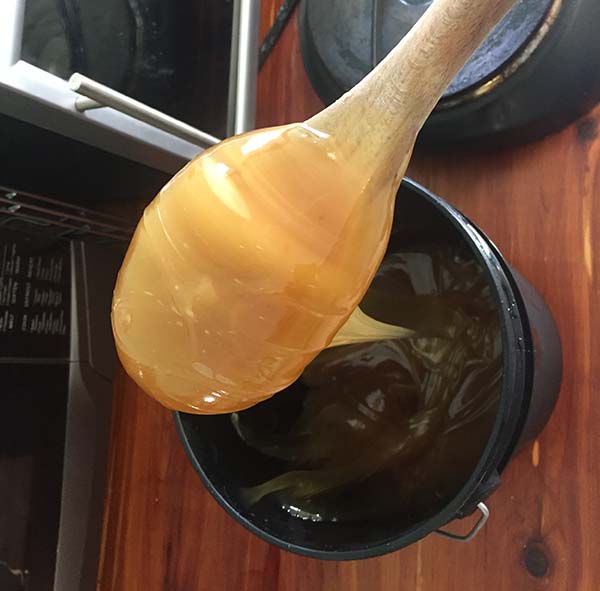
Add the seed. While the honey is still between 90 and 95 F (32 and 35 C), add in the seed honey. Stir gently until the seed honey has been fully incorporated into the liquid honey.
- It’s important to stir gently so that you don’t create more air bubbles
Let the honey rest. Place the lid on the saucepan and set the honey aside to rest for at least 12 hours. During this time, more bubbles will rise to the surface, and the seeding process will begin.
- Over time, the small sugar crystals in the seed honey will help more small crystals grow. As the crystals spread, the entire mixture will turn to creamed honey.
Skim off the bubbles before bottling. Once the honey has had time to rest, skim off any bubbles that have risen to the surface. Transfer the honey to a sterilized glass or plastic container and screw on the lid.
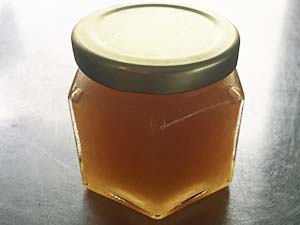
- It’s not absolutely necessary to remove the air bubbles from the honey, but it will improve the appearance of the final product.
Store the honey somewhere cool for about a week. Transfer the honey to an environment that constantly remains around 57 F (14 C). Leave the honey to crystallize for at least five days, and up to two weeks.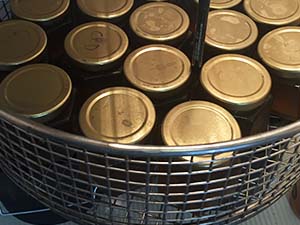
- Good places to store the honey during this time include a basement, cold cellar, refrigerator, or cold garage.
- Once the honey is ready, store it in the cupboard or pantry.
